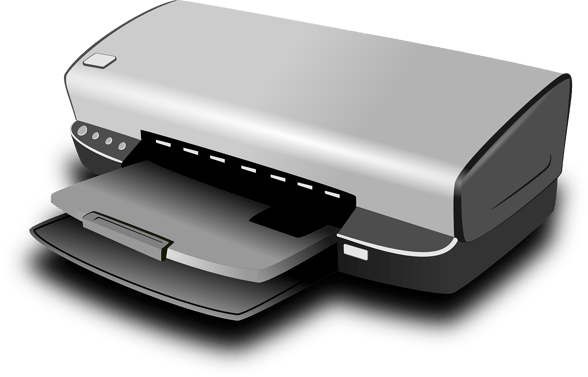A printer is a staple piece of equipment in the office. They sit relatively quietly in a corner of our offices. And are the backdrop for office gossip or mid-morning catch-ups with colleagues. But did you know that printers are an overlooked cyber security risk?
Printers are the one piece of office tech whose presence is typically neglected from a business’s cyber security strategy.
What impact can this have and how can your business mitigate this risk?
When multi-function printers (MFPs) are overlooked or left out of an IT strategy, they are vulnerable to a cyber-attack.
Printers can be used as an entry point to a network, and are able to be exploited by hackers. This entry point could allow unauthorised access to your business’s network and data.
That’s why it is imperative that you strengthen your printers’ network security and start building cyber resilience. You can do this by carrying out regular audits for breach risk prevention planning.
As a business owner or IT manager, you must ensure business data is secure and that all your IT systems are protected against any cyber-threats. So how can you ensure that your office printer isn’t letting the team down?
Why are printers vulnerable to cyber-attacks?
Let’s first take a look at why office printers are vulnerable to attack, then address the business risks and finally, how to secure a network printer to protect your business.
To begin with, we’ll delve a little deeper into why printers are targeted by cybercriminals.
Their purpose: to print & scan important documents
We’re stating the obvious as the primary function of a printer (to print and scan documents) is its most vulnerable aspect. Every day, printers are scanning and printing documents that may contain sensitive or confidential company information, making them an attractive gateway piece of hardware for cybercriminals to gain access to.
Printers receive all types of documentation, from financial statements to tax forms and HR documents with medical information, employee data and more. With all this confidential data available on a printer system, if the necessary printer security measures and precautions have not been taken, it makes it easy for hackers to intercept and access the information.
A printer’s internal hard drive stores information
Did you know that the internal hard drive on your multi-function printer (MFP) stores previous print job information?
Data stored on the internal printer hard drive means that any savvy cybercriminal would be able to hack into the printer’s operating system (OS) and view the documents.
If there are any queued documents, these are also stored on the built-in hard drive, meaning that copies can be retained – even when the printer has been turned off.
It’s a gamble as to whether or not the stored hard drive data holds confidential or sensitive information, but the likelihood is high in the favour that it does. If accessed, it could prove detrimental for a business with potentially confidential information able to be viewed, shared and more.
To prevent printer hard drive data from becoming an issue, it is best to wipe them and ensure there isn’t a data security breach. This is particularly important if the printer is moving locations or office buildings.
Wireless print transmissions can be intercepted
At any time during the work day, potentially sensitive or confidential data is being sent to a printer within the office or remotely.
If a printer becomes compromised or it is connected to a network that is not secure, then these digital files can be intercepted, rerouted, viewed and even printed off at a completely different location. All of which could happen without your knowledge.
As documents can be intercepted wirelessly, this incentivises inception as a method of access for hackers as they’re able to gain access effortlessly.
Printing via a third party, mobile device or remote access; these can be controlled
Sometimes a business or employee may use third party administration, mobile device or remote control via a website to print. These methods for printing can open up multiple entry points for hackers to access your system.
If this these remote controls and third parties are not properly secured, then they can be taken control of by an unauthorised person or cybercriminal. When they have seized control, they would be able to access and manage the printer from a remote location. From here, they’d be able to cause issues for your business.
We’ve discussed the different vulnerabilities of a printer and how it can become a target or gateway for cyber-attacks. But what if you’re too late to implement network printer security? What security risks and impact can this have for your business?
Next, we’ll talk about how detrimental this access point can be for your organisation, if left unprotected.








